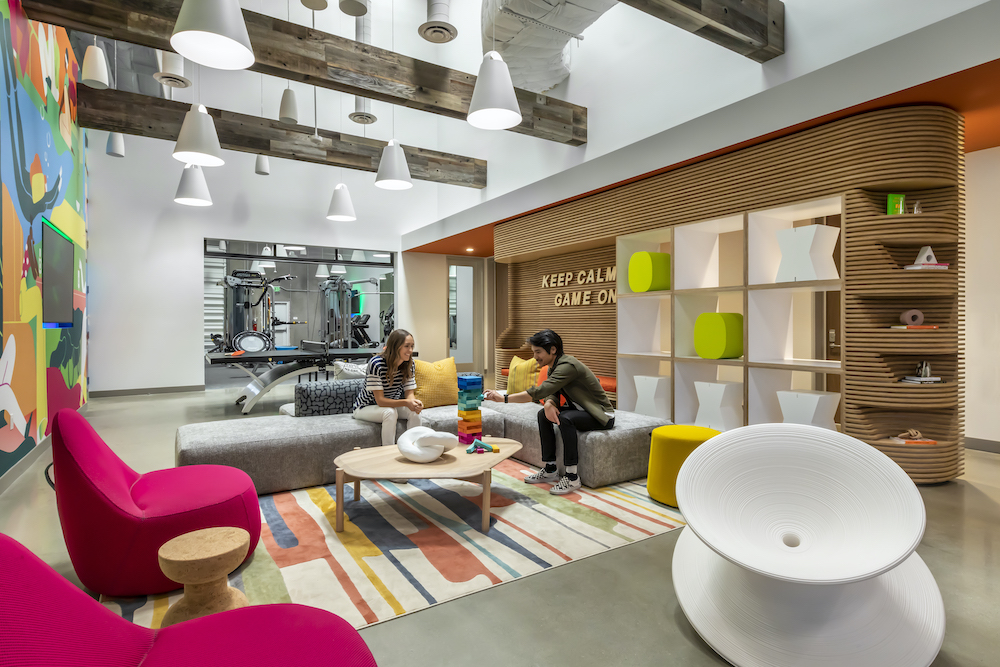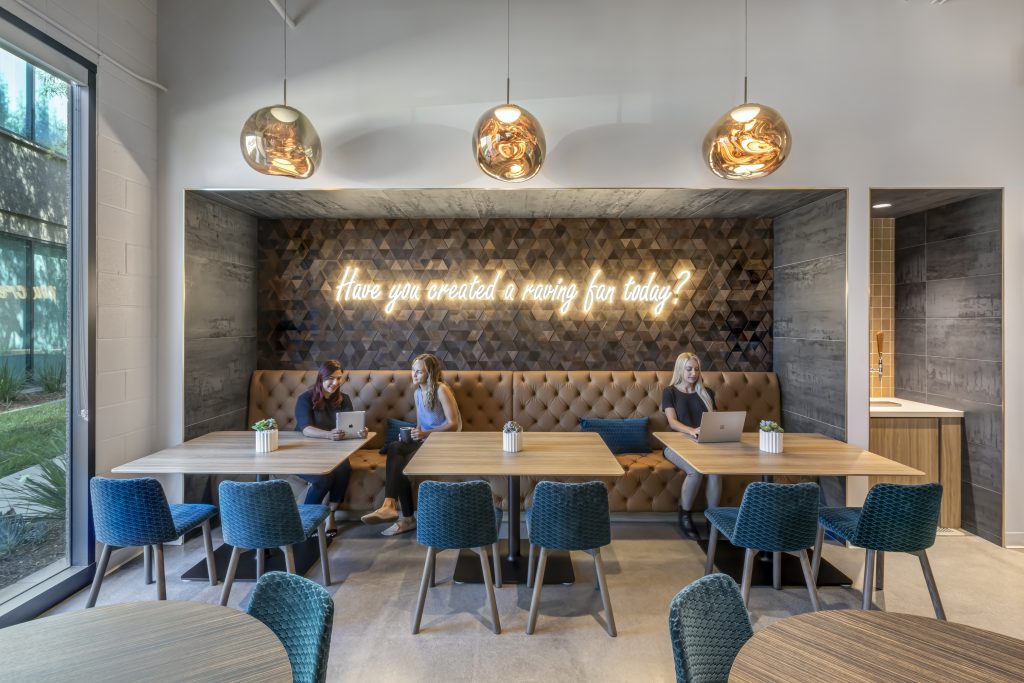Key insights on the frictionless office experience from Anna Alm-Grayhek, IIDA, LEED AP, CCMP, Principal & Director of Workplace Strategy at Hendy.
Gone are the days of the ‘one-size-fits-all’ approach to workplace strategy, and the increasingly empowered hybrid workforce knows it. With many of today’s employees having some autonomy to choose where they work, the concept of a “frictionless” office experience has transcended convenience to become an essential competitive advantage for maintaining a productive and happy team. While it can be tempting to reach for the latest office technology solution as a band-aid for frustrations or inefficiencies, creating a truly seamless workplace experience requires taking a holistic look at the organization; a sort of “zooming out” on its culture, goals, and current ways of working to choose solutions that will anticipate employee needs and offer the highest ROI.
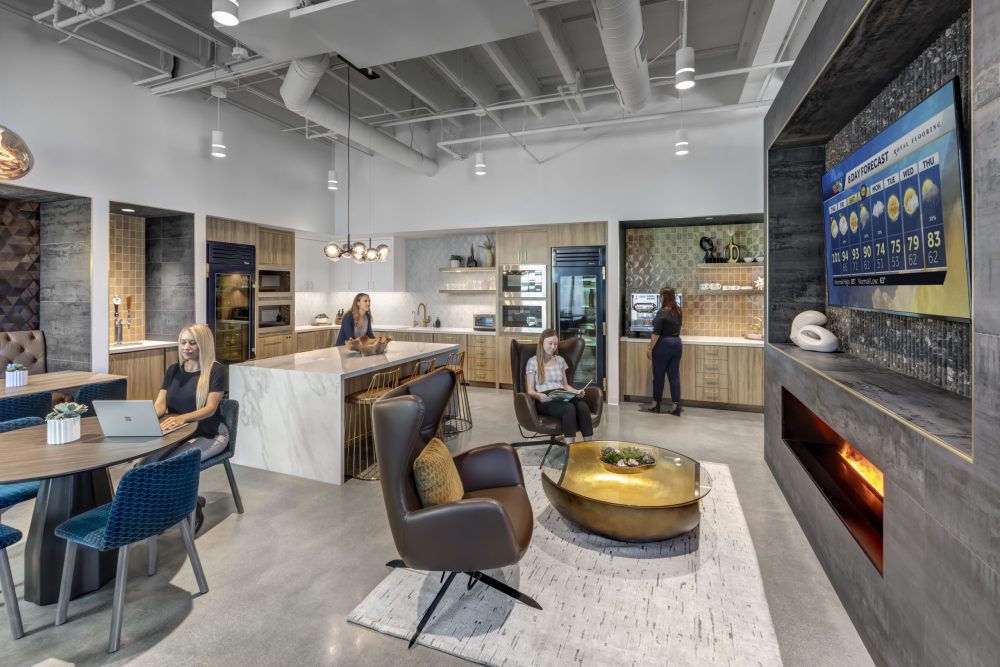
We’ve known for years that the future of work has been digital, but with each year it is becoming increasingly virtual. Hybrid and remote work have proven that physical office space isn’t the only place work can get done, and 63% of high-growth companies plan to continue with a hybrid work strategy. Leaders are also recognizing the importance of the in-person experience as one that drives engagement, synergy, and innovation.
The key is gleaning information from a mixture of team feedback and quantitative data to create an intuitive, employee-centric environment.
As we continue to navigate the stream of emerging workplace trends promising us the “office of the future”, it’s essential to stop and consider an organization’s current pain points and plans before committing to a solution.
Redefining The Workplace
So, where do we start? While the specific solutions will vary for each organization, our firm has seen that creating a truly seamless work experience requires tailoring it to meet varied needs, fortifying it with data-driven insights, and incorporating effortless functionality.
The definition of the ‘workplace’ continues to evolve, so understanding what it means to the organization now and evaluating how the space currently functions will provide clear direction for what changes can and should be made.
For many hybrid employees, whether or not they come into the office comes down to the question of “Where will I be most productive today?”. With options ranging from a dining room table to a coffee shop or co-working space, people will work from wherever their needs can best be met; This choice includes knowing that their desk height will be comfortable and focus rooms will be available. By offering spaces and solutions in the office that feel personalized and intuitive, the workplace can become more than just a place to touch base and transform into a hub that inspires the team to collaborate and innovate.
Knowledge (& Data) is Power
There are endless workplace solutions ranging from offering differing space types to integrated technologies, but without the data and insights into what’s needed, we run the risk of being left with frustrated employees and inefficiencies. It’s important to seek out a balance of unbiased, historical data paired with candid feedback from the team.
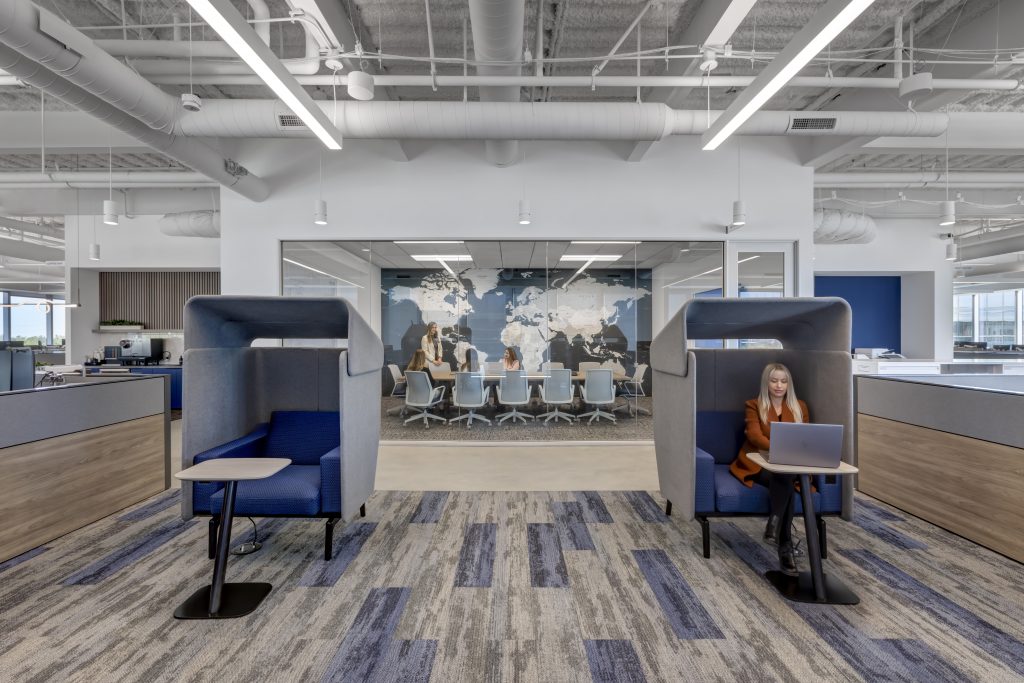
Quantitative data can be gathered from badge-swiping, meeting space reservations, and hoteling desks, offering essential context about space usage and utilization. Understanding how many people come into the office a week and what types of spaces are being used the most offers key insights into the organization’s current space requirements and supports planning for the future. Not only that, but it will provide insight into what types of spaces may be lacking – whether that be meeting rooms, collaboration areas, or engagement spaces. If more, or less space is needed, having access to this data also allows for decisions about your workplace footprint to be made much earlier in the real estate cycle.
Understand The Organization’s DNA
At the end of the day, there’s one thing employees want leaders to do when planning their new and improved workplace: ask them. Assumptions based on data alone can fall short of meeting an organization’s goals. Without an understanding of how employees of all levels work, making decisions about the workplace will be like shooting darts blindfolded and hoping to hit the bullseye. Trying to anticipate concerns or redundancies without feedback can be risky. The more information available the better – even down to the level of knowing employees’ personal preferences. Investing in a high-end coffee maker for the breakroom is a waste of resources if the whole team, for example, prefers to drink tea.
Our firm often partners with our clients to hold collaborative visioning sessions to determine what is and isn’t working. Open feedback and discussions with key decision-makers are crucial, but employees at all levels can provide insights into hidden deficiencies in the current office. Uncovering existing pain points and frustrations opens the door to discussions before evaluating available solutions. Bottom line, an employee whose workspace feels personalized and flexible will be much more engaged than one who shows up for office events but doesn’t feel it’s an efficient place to get work done.
Functional, Employee-Centric Solutions
Anywhere that unnecessary steps can be removed, and personalization can be incorporated is a step in the right direction. Whether it’s smart furniture with adaptable power or conference rooms that know the exact requirements for your next meeting, the potential for enhancing the employee experience is endless. An employee’s needs can change throughout the day based on their tasks and schedule, so solutions that maximize flexibility are essential to a fluid work environment. If the space types offered don’t suit the team’s collaboration, privacy, and “focus work” needs, even the latest conferencing technology won’t solve functional issues.
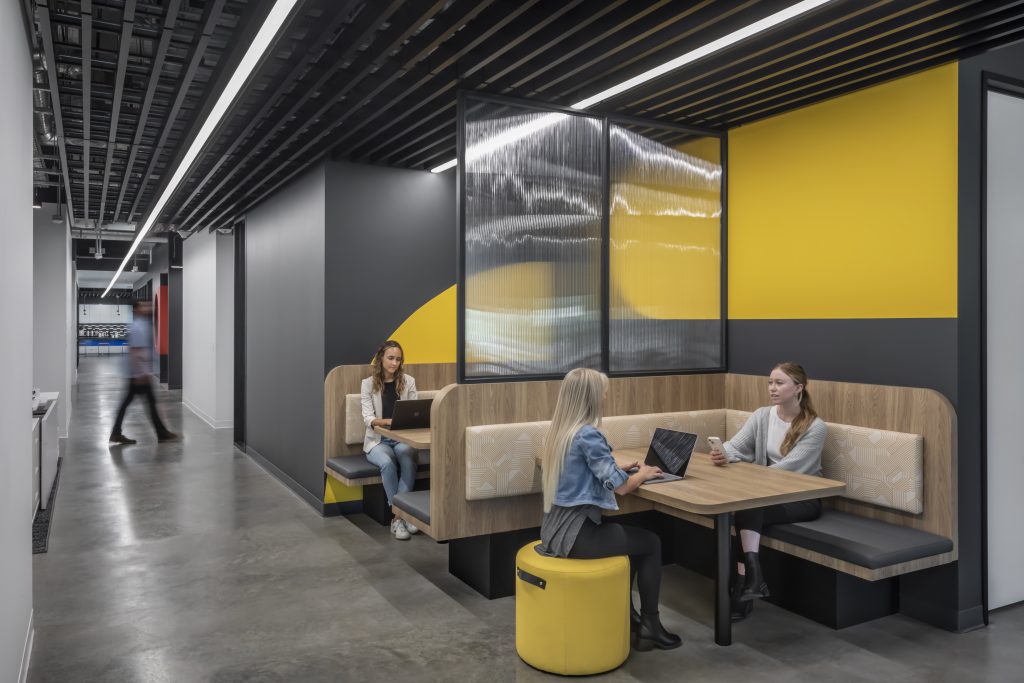
And with the rising popularity of AI, the possibilities only continue to expand. The next few years will likely include a few growing pains as technologies evolve and winners begin to dominate the marketplace, but there are plenty of solutions available today that provide value to hybrid teams’ communication and collaboration. Investing in universal docking stations, surface-mounted power outlets, and height adjustable desks can create a seamless ‘Plug & Play’ experience for team members to quickly move from collaboration areas to personal workspaces, or from their remote to in-office setup. The importance of intentional visual cues also cannot be overlooked in saving employees time and reducing redundancies. The office should function more like a conference center, with clear signage for wayfinding and quick indications of where to find an open desk or meeting room.
So, What’s Next?
We’ve all experienced the power of predictive analytics in our daily lives. Netflix already knows what our next favorite movie will be, and the Starbucks app will pre-order our morning cup of coffee. Those experiences feel effortless and personalized. Technology leaders like Microsoft and Apple are leading the charge by integrating predictive analytics and personal data to elevate the overall employee experience. By harnessing data insights from booking systems as well as building management and equipment, administrative tasks can be reduced, and employees can have a more seamless experience.
Ultimately, looking beyond just “what’s trending” can not only save time and money, but will also reduce the risk of confusing or frustrating employees. We know that people are naturally resistant to change, so substantiated evidence to support the new workplace process or solution is crucial to their success. Leadership championing the changes to ensure the team understands the ‘how’ and the ‘why’ behind them is just as important. In the end, a seamless workplace is one where the entire team feels their needs are anticipated and they can be productive, connected, and engaged.
Images courtesy of RMA Architectural Photography.
Like this article?
Enjoy more insights from Anna Alm-Grayhek below.
Designing Workspaces That Surpass Remote Work Comforts
Hybrid Work: It’s Not a Revolution, it’s a Revelation
